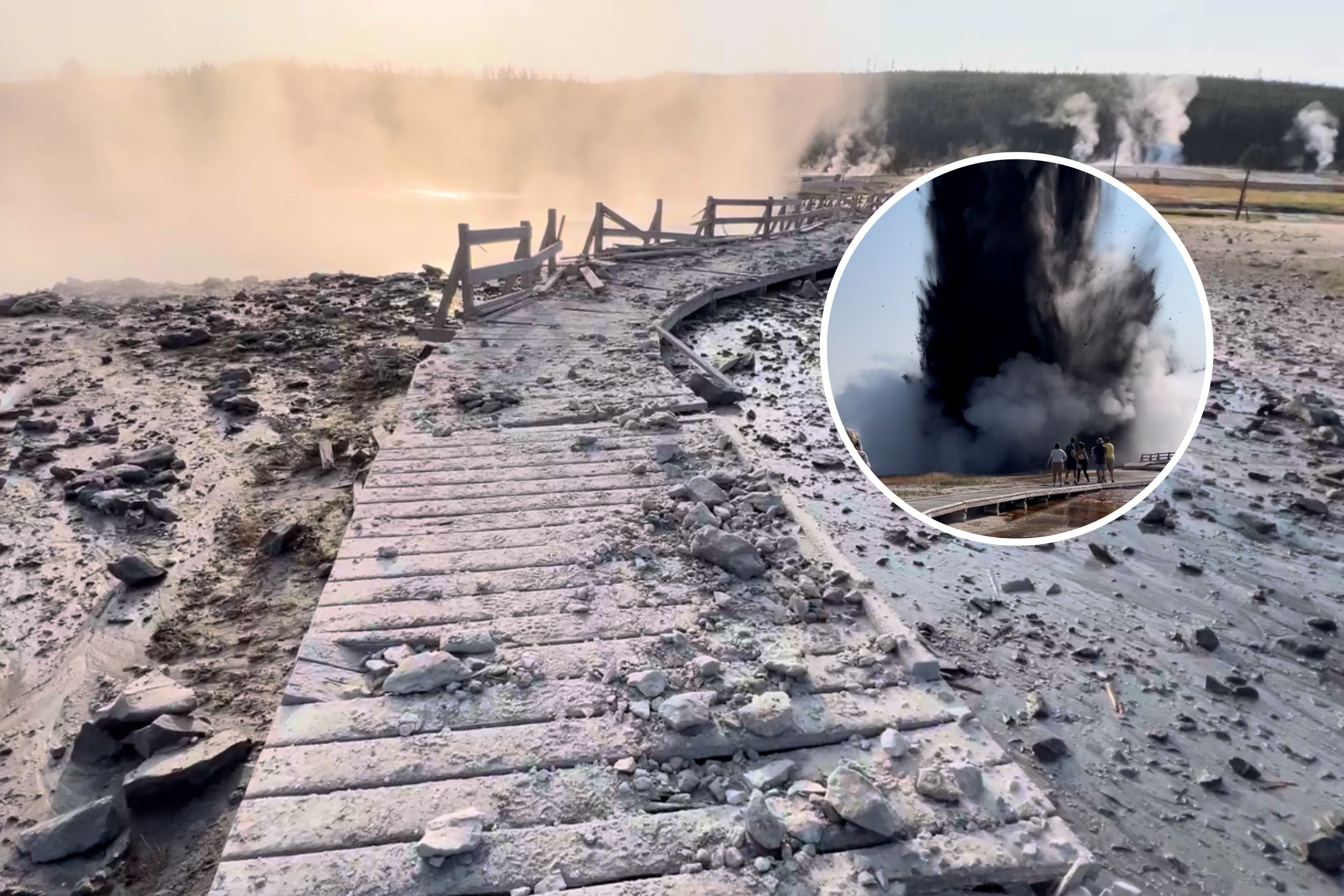The Explosion At Yellowstone Park

The captivating beauty of Yellowstone National Park draws millions of visitors each year, but beneath its serene surface lies a volatile layer of geological activity. The park is home to a supervolcano, and the potential for an explosion at Yellowstone Park has long been a topic of interest and concern among scientists and nature enthusiasts alike. With its stunning landscapes and diverse wildlife, it is easy to overlook the powerful forces that shape this national treasure. However, the reality of an eruption remains a pressing question that warrants exploration.
Yellowstone's geothermal features, including geysers, hot springs, and fumaroles, are constant reminders of the underlying magma reservoirs. The park's geological history reveals a series of explosive events, with the most recent major eruption occurring approximately 640,000 years ago. As we delve into the science behind these explosive events, we must also consider the implications for the environment and human safety should an eruption occur again. With the ongoing monitoring of seismic activity in the region, one cannot help but wonder: how prepared is the world for an explosion at Yellowstone Park?
As discussions around climate change and natural disasters become increasingly pertinent, the potential consequences of an eruption at Yellowstone must not be ignored. In this article, we will examine the causes of such explosive phenomena, the risks involved, and the measures in place to safeguard both the park and its visitors. Join us as we navigate the fascinating yet daunting topic of the explosion at Yellowstone Park.
What Causes Explosions at Yellowstone Park?
The Yellowstone supervolcano is driven by a massive magma chamber located beneath the surface. Over time, the accumulation of magma can lead to immense pressure build-up. When the pressure exceeds the strength of the rock above, it results in a violent explosion. Several factors contribute to this process:
- **Magma Accumulation:** The continuous influx of magma into the chamber can lead to explosive eruptions.
- **Water Interaction:** When magma comes into contact with groundwater, it can produce steam and increase pressure, leading to an explosion.
- **Tectonic Activity:** Earthquakes and shifting tectonic plates can trigger eruptions by fracturing the rock above the magma chamber.
What Are the Historical Eruptions in Yellowstone?
Yellowstone's geological past is marked by several catastrophic eruptions. The most significant events include:
How Does the U.S. Geological Survey Monitor Yellowstone?
To ensure the safety of park visitors and residents in surrounding areas, the U.S. Geological Survey (USGS) employs a comprehensive monitoring system. This includes:
- **Seismic Monitoring:** Thousands of seismic sensors track earthquakes and tremors in the region.
- **Ground Deformation Measurements:** GPS stations detect any ground movement that may indicate magma movement beneath the surface.
- **Gas Emissions Monitoring:** Instruments are used to measure gas emissions, which can provide insight into volcanic activity.
What Are the Risks of an Explosion at Yellowstone Park?
If an explosion were to occur, the consequences could be devastating. The potential risks include:
- **Ash Fallout:** Volcanic ash can spread over large distances, affecting air quality and disrupting transportation systems.
- **Lava Flows:** While less likely than an explosive eruption, lava flows can destroy everything in their path.
- **Climate Impact:** An eruption could inject ash and gases into the atmosphere, potentially leading to climate changes.
Are There Any Preparedness Plans in Place?
The National Park Service and USGS have developed preparedness plans to respond to potential eruptions. These include:
- **Evacuation Protocols:** Clear evacuation routes and procedures have been established for visitors and residents.
- **Public Awareness Campaigns:** Programs are in place to educate the public about volcanic hazards and safety measures.
- **Emergency Response Plans:** Coordination with local, state, and federal agencies ensures a rapid response in the event of an eruption.
What Can Visitors Do to Stay Safe During Their Visit?
To ensure safety while visiting Yellowstone, tourists should:
- **Stay Informed:** Keep updated on current conditions and alerts issued by park authorities.
- **Follow Guidelines:** Adhere to all park regulations and guidelines provided by park rangers.
- **Be Prepared:** Carry emergency supplies, such as water, food, and first-aid kits.
Conclusion: The Future of Yellowstone Park's Volcanic Activity
The explosion at Yellowstone Park remains a critical topic of discussion among scientists, policymakers, and the public. Understanding the causes and risks associated with Yellowstone's volcanic activity is essential for planning and preparedness. While the likelihood of an eruption in the near future is considered low, continuous monitoring and research are imperative to mitigate potential hazards. As we marvel at the beauty of this iconic park, we must also respect and acknowledge the powerful forces that lie beneath its surface.
ncG1vNJzZmirn521b6%2FOpmasp5idu6bD0qCcq7FmZLK5vMuoqqKnnmKutXnYnqOlp6eowbC6xGanmqqbY7W1ucs%3D